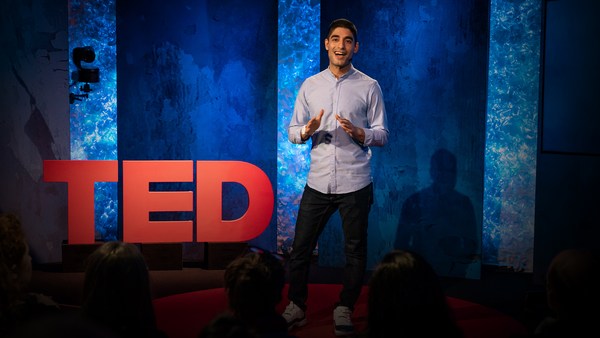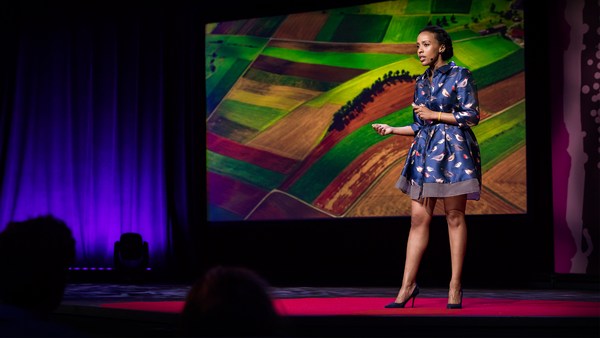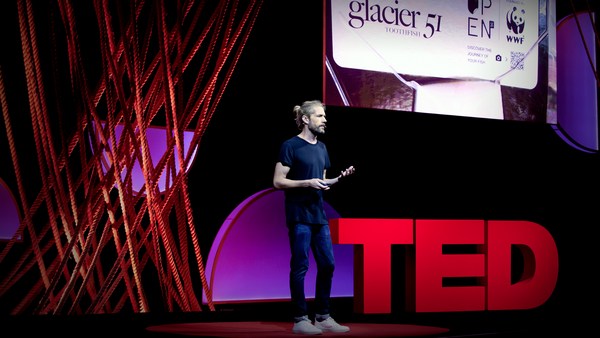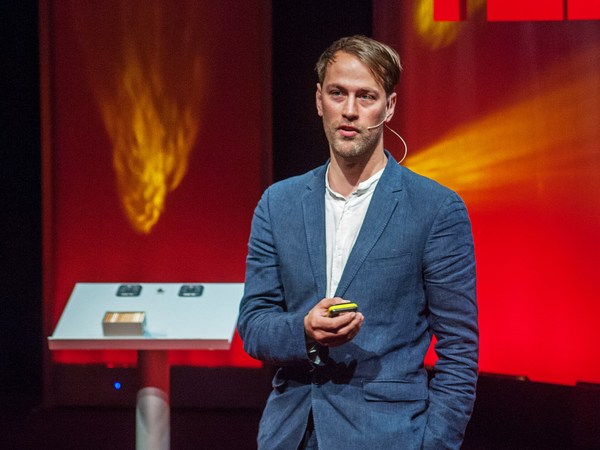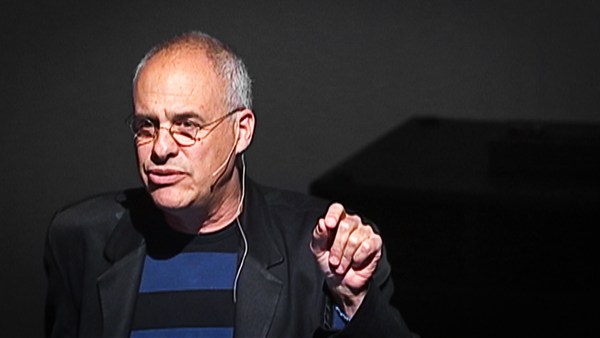So data and analytics are dramatically changing our everyday lives. Not just online, not just in some distant future, but in the physical world, and in very real and tangible ways. I spent the past 11 years of my life as a geek at MIT, working in big data labs that seek to use data science to study the physical world and try to solve society's great problems.
The field of big data seeks to analyze massive pools of data using computational tools to find patterns and trends. Data can be a really extraordinary storyteller, unveiling the hidden narratives of things in our everyday lives that we never would have seen. I find the personal stories of inanimate things brought to life to be extraordinarily compelling. I want to highlight, first, two projects from my time at MIT that I think highlight this phenomenon really well.
The first is called Trash Track, and in this project, we sought to better understand the waste-management system, to answer the question "Where does your trash go when you throw it away?" Your old coffee cup or that flip phone that you carried around in the early 2000s, or a bagel or this morning's paper -- where do these things go? This data didn't exist, so we had to create it. We answered and then visualized this question by installing small sensors into pieces of trash and then throwing them into the waste system. And what you're seeing here is the data. Every line, every node that you see is a single piece of trash moving through the city of Seattle, and then across the state, and then across the country, as weeks and months go by. And it's important to visualize this data, because none of you are, probably, sitting here thinking, "Yeah, that looks right."
(Laughter)
"That's working like it should, right?" Because, no --
(Laughter)
What the data shows us is a highly inefficient system whose inherent brokenness I don't think we really would have seen had the sensors not done the journalism for us.
A second project that I'd have to highlight has to do with creating robots that dive into sewers and sample wastewater. I know that sewage kind of gets a bad rap, but it's actually kind of awesome, because it can tell us an incredible amount about the health of our communities. This technology was spun out by a group call Biobot Analytics, who's creating a cutting-edge technology to turn our sewers into modern-day health observatories. Their goal is to study opioids within the sewage to better understand consumption in cities. And this data is key, because it really helps cities understand where people are using, how to allocate resources and the effectiveness of programming over time. Once again, the technology that's built into this machine is pulling back the curtain and showing us something about our cities that we never would have seen without it.
So it turns out, as we see, that big data is really everywhere -- even in your toilet. And so now that we've talked about trash and sewage, let's move on ... to food.
(Laughter)
A year ago, I left MIT to pursue a passion in food, and in 2017, started a company with my husband, called Family Dinner. The goal of our company is to create community around local food and the people who grow it. To make this happen, we're using data analytics, automation and technology to build a distributed network of local farms and to make improvements on the food system. So what we see here is that the broad techniques and the mission of what we're trying to do is really not dissimilar from the work at the MIT labs. Which brings us to a critical question: Why exactly would someone leave a very promising career at one of the top urban science labs in the world to drive carrots around in her mom's Acura?
(Laughter)
It's a great car.
Because I believe that the story of local food needs to be understood, told and elevated, and in many ways, I think that nerds like us are really uniquely poised to tell it.
So where are we starting? What's our starting point? The current national food system is optimized for one thing only, and that's corporate profit, right? And think about that. The most compelling reason for food companies to exist is not to feed hungry people, it's not to make delicious-tasting food. It's profit. And that has detrimental effects at all levels of our food system. The antibiotics and pesticides that are being put into our food are detrimental to our health. Price pressure is forcing small farms out of business. In fact, a lot of the things that you think about farms no longer exist. Farms don't look like farms, they look like factories. And at the end of the day, the quality of the food that we're eating really suffers, too. A factory-farm tomato may kind of look like a regular tomato: bright red exterior ... But when you bite into it, the taste and texture just leave you wanting.
And we know that perhaps the greatest tragedy in all of this is that between 30 and 40 percent of this food is just wasted ... thrown away. That is 1.6 billion tons. I can't even wrap my head around that number. 1.6 billion tons. That's 1.2 trillion dollars a year in wasted food. That is the cost of on-demand eating and convenience and the broken food system.
Now, where's this waste happening? Where's all this waste coming from? Well, we know that it happens in the field when you don't pick the sexiest-looking potatoes. We know that it happens in transit, at the warehouses, in the grocery stores. And finally, on our own kitchen counters, when we determine that that spotty, brown banana no longer looks so yummy. All that waste, all that effort. Food is planted, grown, harvested, shipped, and then just thrown away. We think that there has to be a better way.
And so how to we improve upon this? How do we make a better system? In order to do this, we understand that we need to eliminate waste in the food supply chain. We need to get data in the hands of farmers, so that they can make better predictions. So they can, you know, kind of compete with the big guy. And then finally, we need to prize, as a company, quality and taste above everything, so that people really value the delicious food on their plates. This, we believe, is the better system. This is the better way. And the path to that better way is paved with data.
To highlight all of this, I want to tell the tale of two tomatoes. We'll talk about them one by one. A tomato in itself contains a beautiful snapshot of everything you might want to know about the life cycle of that fruit: where it was grown, what it was treated with, nutritional value, miles traveled to get to your plate, CO2 emissions along the way. All of that information, all those little chapters in one small fruit. It's very exciting.
This is tomato number one. This is the guy that you'll find in sub shops, supermarkets and fast-food joints around the world. It's got a really long and complicated backstory. It's been treated with a cocktail of, like, a dozen pesticides and it has traveled at least 1,600 miles to get to your house. And the image here is green, because these tomatoes are picked when green and hard as a rock, and then they are gassed along the way so that when they arrive at the destination, they look bright and shiny and red and ripe. All of that effort, all of that agricultural innovation and technology to create a product that is entirely without taste.
And onto the second tomato in our tale. This is the local version of the fruit. Its story is much, much shorter. This guy was grown by Luke Mahoney and his family at Brookford Farm in Canterbury, New Hampshire. It's got a pretty boring backstory. It was planted, sat in the sun and then it was picked.
(Laughter)
That's it. Like, you wouldn't want to -- yeah, there's not much more to that. And it traveled maybe 70 miles to get your plate. But the difference is dramatic.
I want you think about the last time you ate a fresh, summer tomato. And I know we're all covered in our jackets, but think about it. The last time you ate a tomato from the garden. It's warm from the sun, it's richly red, maybe it smells like dirt. There's something nostalgic and almost magical in that experience. The taste and the flavor are incomparable. And we really don't have to travel super far to get it.
Now this story extends up the food chain, from the fruits and the vegetables that are on our plate to the animals and the animal products that we consume. What goes into raising them, and more importantly, what doesn't go into raising them, is critically important.
Luke and his family have 60 cows. They use traditional methods. They do it the old way: pasture-raised, no hormones, no antibiotics, hay for days. And what they're doing here is just treating cows like they're cows, not like they're in a science experiment. He's raising animals the way that his grandfather and his grandfather would have. And at the end, it's just better. It's better for the animals; it's better for the environment. Luke is not optimizing for profit or price, but for taste and for humanity.
And what you're thinking is, "There's already a solution to this. It's the farmer's markets." The ones that many of you visit and the ones that I really enjoy. They are a wonderful, but, in many ways, suboptimal solution. For us as the consumers, it's kind of great, right? You go, there's this beautiful bounty of food, you get the warm and fuzzies for supporting a local farm and you get the experience of trying something new and trying diverse products. And inevitably, there's some guy playing the ukulele somewhere in the background.
(Laughter)
But for the farmers, this presents a lot of risk, right? You wake up at four. You pack your truck, you hire a team, you get to your stall, but you have no guarantees that you're going to move your product that day. There's too many variables in New England. For example, the weather, which is just, like, a little bit unpredictable here. The weather is one of the many X factors that determine whether or not a market will be worth it for the farmers. Every time, they roll the dice.
And there's another option. Here, we're talking about CSAs: community-supported agriculture. In this model, customers pay up front, bearing the financial risk for the farms. Farmers grow what they can and the customers enjoy that bounty. This also has a couple issues. It's great for the farmer, because they're ensuring that they'll sell what they buy, but for us, we still have to go and pick up that share, and we know that a lot of farms can't grow a huge diversity of products, so sometimes, you're stuck with a mountain of any one particular thing. Maybe this has happened to some of you. And what do you do with 25 pounds of rutabaga in the dead of winter? I still don't know.
So back to the question. How do we fix this? What we're hoping to do and what we're hoping to build is just a better way to CSA. And there are three core innovations that make this thing hum. The first of which is a subscription-based e-commerce platform, which helps us create a consistent demand for our farmers throughout the year. The subscription part here is key. Orders process weekly, customers opt out instead of opt in -- that means we've got kind of the same number of orders week to week. Second, this means that if farmers can sell online, they're no longer limited to the geography directly around their farm or to the number of markets that they can sell. We've blown the doors off of that for them.
Second: demand forecasting. We're using analytics to allow ourselves to look into the future and forecast demand. This lets farmers know how much to harvest in the near-term, but also what to plant going forward. If 200 orders process on Monday, then we buy to meet that exact demand. 200 heads of broccoli, 200 pieces of salmon, et cetera, et cetera. This automation in ordering means that here, we are eliminating the waste in the food system that bothers us all so much, because we are ensuring that the supply meets the exact demand. It also allows us to look into the future with the farmers and do crop planning. So if we can say to them, in June of this year, "I'm going to need 400 pounds of asparagus and 500 pounds of berries every week," they can plant that accordingly, knowing with confidence that they will sell everything that they have grown.
And finally, we use a route-optimization software to help us solve the problem of the traveling salesman. We get a fleet of workers to come in and help us go the last mile, bringing all these goodies directly to your door. Without data science and a super-capable, wonderful team, none of this would be possible.
So maybe you've seen that we've got some sort of fiery, passionate core beliefs. Yes, we're trying to build a sustainable business, but our eye is not only on profit, it's on building a better, holistic system of food. And here's what we value. People first. We're trying to build community around food, the people who love it and the people who grow it. We built this company to support small farms. Zero waste. We all hate wasting food, it just feels wrong -- even that weirdo banana that's been sitting around on your coffee table for too long. And lastly, taste. If it doesn't taste good, if it's not that, like, perfect summer tomato, why bother?
So what we've done is worked with all these local farms to bring their things in and then to drop them directly at your door, so that we're connecting you right to them and making, again, a more holistic system. This is our vision of the future. To extend this model beyond Boston, beyond New England and across the country. To create a nationwide distributed network of local farms and to connect all these farmers with the people like you who will love their food. We believe, at the end of the day, that really insisting on eating local food is a revolutionary act. And we invite you to join us. And who knows? You may even make some friends along the way.
Thank you very much.
(Applause)
